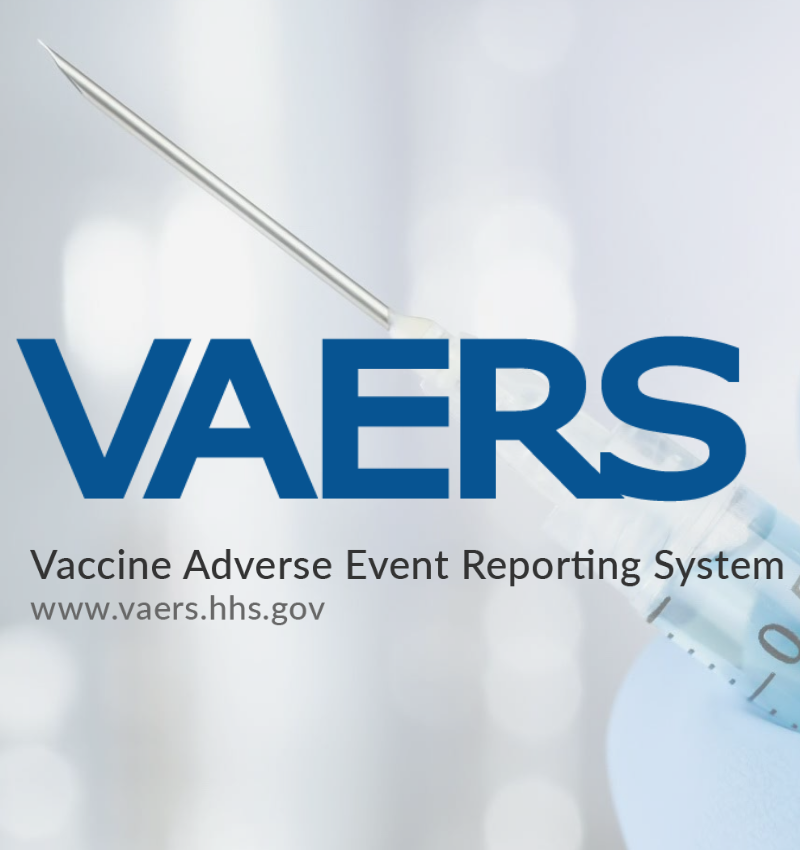DNA and mRNA Vaccines – FDA Guidance and Regulations
Guidelines and Safety Concerns with DNA and mRNA Vaccines
While DNA and mRNA vaccines have been under development for decades, they are new to the market and human bodies. We are seeing more data and information on safety, regulation, and longer-term effects. However, there continue to be unanswered questions.
Today’s article reviews what we know about DNA and mRNA vaccines and provides you with information so you can feel empowered when making medical decisions for yourself and your family.
Keep reading to learn more about:
- The difference between DNA and mRNA vaccines from conventional vaccines
- The FDA and regulatory guidelines for vaccines
- Potential safety concerns and health risks
- Action steps for vaccine recovery
What are DNA and mRNA vaccines?
First, the basic biology to know the difference between DNA and RNA.
DNA is the double helix structured genetic code inside every cell’s nucleus. It is the blueprint for life. RNA is a copy of that DNA and is a single strand instead of a double. The “m” in mRNA stands for messenger.
In transcription, the DNA is copied to the mRNA. In the next step, called translation, the blueprint is read and turned into a protein. This process happens inside cells.
Both DNA and mRNA vaccines use the genetic material, or code, from the virus or other pathogen. The foreign genetic material uses the body’s cells to make the protein, which elicits an immune response that produces antibodies that protect against that part of the pathogen.
Conventional vaccines contain an inactivated virus, live virus, or parts of a virus. DNA and mRNA vaccines don’t contain the virus itself, just part of the genetic code for the virus.
DNA vaccines are stable at room temperature and mRNA vaccines require cold temperature storage. Both gene-based vaccines have been researched and developed for decades but have only been used on a large scale in the last couple of years as a response to the Covid-19 pandemic, because they were never to the point of being able to be approved in the normal vaccine evaluation process of evaluating safety and effectiveness.
The first (Covid19) DNA vaccine to come to market is ZyCoV-D, a DNA vaccine against SARS-CoV-2 (the virus that causes Covid-19), was developed in India. The vaccine is applied to the skin, not injected. The DNA enters cells in the body where mRNA copies are made, eliciting an immune response and antibody production against the foreign DNA.
The first mRNA vaccines brought to market are the mRNA Covid-19 vaccines developed by Pfizer and Moderna, the primary vaccines available in the United States. The vaccines contain the mRNA code for the spike protein portion of SARS-VoV-2. When injected, the cells use the mRNA code to make the viral spike protein, which then triggers the body’s immune response.
FDA Regulatory Guidelines and Emergency Use Authorization
In the United States, the U.S. Food and Drug Administration (FDA) regulates vaccines. Both Covid mRNA vaccines available have received an emergency use authorization (EUA) from the FDA in the rush to find a solution during the pandemic. The EUA allows a fast-track to bring new vaccines to the public in an emergency.
These mRNA vaccines have been tested in large clinical trials but have not been granted full authorization by the FDA.
The World Health Organization (WHO) developed safety guidelines for DNA vaccines in 2007 and updated guidelines in 2019. These guidelines discuss the possible health and toxicity risks of this technology.
It recommends investigating organs, tissues, endocrine glands, and reproductive health to uncover any unintended consequences of vaccination. In addition, the updates discuss emergency use of the technology where the risk for the disease may outweigh the risk of the vaccines for the population.
From the document:
“As with all vaccines, the intended clinical use factors into the benefit/risk decision-making, with extremely low tolerance of risk for vaccines to be used routinely for children vs. a greater tolerance of risk for vaccines against priority pathogens of vaccine emergency ranking that would be used in an outbreak setting where the risk of the disease exceeds the risk from the vaccine. All prophylactic vaccines are held to high expectations of safety”.
The WHO has established similar guidelines for mRNA vaccines with a new draft released in December of 2020. These guidelines are meant as scientific advisory to inform vaccine safety, manufacturing, and vaccine approval globally.
While the WHO guidelines for DNA vaccines were established in 2007, it wasn’t until the Covid pandemic in 2020 that guidelines for mRNA vaccines were established, despite mRNA vaccines already in development.
The DNA vaccine guidelines discuss safety concerns and possible long-term effects that need to be researched and understood, but the mRNA guidelines don’t express the same concerns. Perhaps the guidelines were rushed given the nature of the pandemic.
Potential Vaccine Safety Concerns
As with all medical interventions, side effects and risks are possible. Let’s look at some of them for DNA and mRNA vaccines.
Common vaccine side effects
Side effects of vaccination may be due to the body’s fast and intense immune response to the genetic material. For the mRNA Covid vaccines, around 65% experience at least one of the following side effects from the first dose:
- Soreness in arm at the injection site
- Fatigue
- Muscle pain
- Headache
- Chills
- Fever
- Joint pain
- Nausea
- Muscle spasm
- Sweating
- Dizziness
- Flushing
- Brain fog
- Decreased appetite
- Arm swelling
- Poor sleep
- Itching
- Tingling
- Diarrhea
- Nasal congestion
- Palpitations
Potential adverse reactions
Unlike the manageable side effects listed above, a small percentage of people may experience an allergic reaction to a vaccine. In the vaccine clinical trials, 0.6% of Pfizer vaccine recipients and 1.5% of Moderna vaccine recipients reported hypersensitivity reactions, compared to 0.51% and 1.1% of those who received a placebo injection.
Under the FDA emergency authorization guidance, vaccines shouldn’t be administered to those with a known history of anaphylaxis to any vaccine component. Everyone receiving an mRNA vaccine is required to wait 15 minutes after vaccination to monitor for any allergic reaction, and those at a greater risk must be monitored for 30 minutes.
Some propose that allergic reactions may occur to ingredients in the vaccine other than the genetic component. The mRNA vaccines don’t contain milk, egg, or other common allergens like previous vaccine technologies.
Polyethylene glycol, or PEG, is used as part of the delivery system for some of the vaccines. PEG is also referred to as the lipid nanoparticle (LPN) delivery system. Some people can have anaphylactic reactions to PEG.
Not all severe reactions to a vaccine are anaphylaxis. Out of the first 1.8 million Americans to receive the Pfizer vaccine in December of 2020, there were 175 cases of a severe reaction, 21 of which were anaphylaxis.
Myocarditis
Myocarditis, or inflammation of the heart muscle, may be triggered by mRNA vaccines in some. These cases have primarily been in young men after receiving the second vaccine dose. Symptoms include:
- Chest pain
- Shortness of breath
- Heart palpitations
- Fatigue
- Decreased exercise tolerance
There were 1226 cases of myocarditis between December 2020 and June 2021. Those followed in the study recovered quite well from myocarditis with supportive interventions, such as anti-inflammatory medications. Some were hospitalized, but the study reported no deaths.
Unknown risks
Because of the EUA and rapid vaccination in a large population, we only have safety data since the vaccines were introduced around two years ago. We don’t have long-term safety data. And we won’t have it until time passes and more data is collected.
There are many questions to answer regarding DNA and mRNA vaccines on health over the long term, such as their impact on human DNA, fertility, and all body systems.
Dendrimers
Dendrimers are synthetic nanoparticles used as an adjuvant in mRNA vaccines to stimulate the immune system. Dendrimers are known to cause localized toxicity to the cells they encounter.
However, other vaccine ingredients are meant to mitigate these concerns. Dendrimers are a vaccine ingredient that we need more research on in terms of health risks, especially over the long-term.
To learn more about dendrimers, please read Toxicity of Dendrimers.
Vaccination vs. infection
With all vaccination decisions, it’s important to weigh the risks of the disease itself alongside the potential risks of vaccination. In the case of Covid-19, most people will likely be infected because the virus is highly contagious.
Unlike older vaccines against other viruses, most people who’ve been vaccinated against Covid-19 will still get the disease. Recent data indicates that the vaccine does not protect against the severe form of the disease and death. (SUSAN added STUDIES to end of doc)
Vaccine Recovery Action Steps
Considering the possible risks of vaccines, it’s important to be informed. Information is empowerment!
Here are some considerations for recovering from vaccine side effects:
- Support the body’s immune system and detoxification systems before and after vaccination. In these articles, you’ll find more information about diet, detoxification strategies, supplements, and IV therapy.
- Discuss your medical history and allergies with your provider when deciding about vaccines, especially if you have a history of anaphylaxis. Know the ingredients in the vaccines you are considering.
- Monitor changes in your health after receiving a vaccination. Notice any new symptoms or changes in how you feel and follow up with your provider. It can be weeks or months after receiving the vaccine. Below is a list of labs to consider:
-
- High Sensitivity C-Reactive Protein (hs-CRP) CRP is an acute phase inflammatory plasma protein synthesized by the liver. The “high sensitivity” CRP test is needed to detect very low levels of CRP that may be seen with vascular and/or systemic inflammation.
- An erythrocyte sedimentation rate (ESR) is a type of blood test that measures how quickly erythrocytes, or red blood cells, settle to the bottom of a test tube blood sample. A faster-than-normal rate may indicate inflammation in the body.
- Myeloperoxidase MPO (Quest, or Boston Heart) The MPO Blood Test measures the antibody levels of Myeloperoxidase. Elevated Myeloperoxidase antibodies are associated with vascular diseases, or other inflammatory conditions.
- Lipoprotein-Associated Phospholipase A2 Activity [LpPLA2] (Quest or Boston Heart) The Lp-PLA2 test is associated with vascular inflammation, and high levels are thought to increase the chance of cardiovascular events, including heart attack or stroke.
- Ferritin is a key mediator of immune dysregulation, especially under extreme hyperferritinemia, via direct immune-suppressive and pro-inflammatory effects, contributing to the cytokine storm.
- Fibrinogen levels may rise sharply during any condition that causes inflammation or tissue damage.
- PULS Test – is a serum blood test that measures the body’s immune system response to arterial injury. These injuries lead to the formation and progression of cardiac lesions which may become unstable and rupture, leading to cardiac events.
- Stress less. Questions and decisions about Covid vaccinations have prompted stress and worry among many people as they consider the best choices for themselves and their families. Stress negatively impacts health, so be aware of your relationship with stress as you navigate vaccines. Collect information, discuss your situation with a trusted healthcare provider, and give yourself a big dose of compassion. We are all navigating new and uncharted territory.
DNA and mRNA vaccines will likely become the new vaccine standard. It’s helpful to understand what they are, how they work, and what to expect. Functional Medicine offers many tools for supporting the immune system and body when exposed to vaccines.
This website is dedicated to being a trusted resource for supporting the body through vaccine recovery.
References
- https://www.ncbi.nlm.nih.gov/pmc/articles/PMC7938284/
- https://www.ncbi.nlm.nih.gov/pmc/articles/PMC6631684/
- https://www.nature.com/articles/d41586-021-02385-x
- https://www.fda.gov/vaccines-blood-biologics/vaccines/emergency-use-authorization-vaccines-explained
- https://cdn.who.int/media/docs/default-source/biologicals/vaccine-quality/guidelines-for-assuring-the-quality-and-non-clinical-safety-evaluation-of-dna-vaccines70ee1b3e-88a6-40af-8989-fbff8304a377.pdf?sfvrsn=521ee591_1&download=true
- https://www.who.int/docs/default-source/biologicals/ecbs/reg-considerations-on-rna-vaccines_1st-draft_pc_tz_22122020.pdf?sfvrsn=c13e1e20_3
- https://www.ncbi.nlm.nih.gov/pmc/articles/PMC7745181/
- https://www.ncbi.nlm.nih.gov/pmc/articles/PMC8049195/
- https://www.ncbi.nlm.nih.gov/pmc/articles/PMC7948517/
- https://www.ncbi.nlm.nih.gov/pmc/articles/PMC8441754/
- https://www.ncbi.nlm.nih.gov/pmc/articles/PMC7862013/
- https://pubmed.ncbi.nlm.nih.gov/34237049/
- (UK) COVID-19 vaccine surveillance report Week 51- https://www.medrxiv.org/content/10.1101/2022.07.04.22277225v1.full.pdf
- https://assets.publishing.service.gov.uk/government/uploads/system/uploads/attachment_data/file/1043608/Vaccine_surveillance_report_-_week_51.pdf
- Waning of SARS-CoV-2 vaccine-induced immunity: A systematic 2 review and secondary data analysis
- https://www.mercurynews.com/2022/03/06/covid-19-deaths-among-vaccinated-rose-sharply-with-omicron/
- https://expose-news.com/2022/03/01/russia-distraction-uk-gov-revealed-triple-vaccinated-account-9-in-10-covid-deaths/
- https://www.ahajournals.org/doi/abs/10.1161/circ.144.suppl_1.10712






